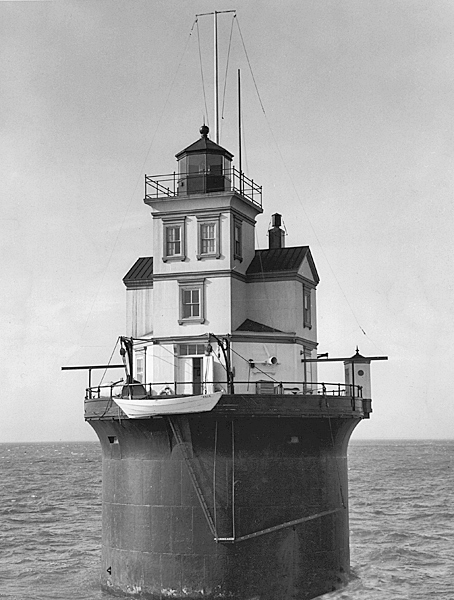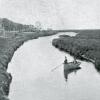Fourteen Foot Bank Lighthouse stands off Bowers
Fourteen Foot Bank is an oval shoal in Delaware Bay situated three-and-a-half miles from the Delaware shore east of Bowers. Prior to a lighthouse being constructed on site, the area was monitored by a lightship. However, harsh winters often forced the lightship to abandon its post and seek refuge behind the breakwater off Lewes. A lighthouse was recommended in 1878 to ensure 24-7 coverage.
Construction of the lighthouse occurred from 1885 into 1887. It was the first lighthouse in the country to be constructed using the pneumatic caisson method. The wooden base and the cast-iron cylinder were made on shore and sailed to the shoal from Lewes about 20 miles away. When complete, the project came in under budget at $125,000. The lighthouse was activated in April 1887.
The lightkeeper’s house atop the caisson is a two-story, cast-iron dwelling, fabricated by Messrs. H.A. Ramsay & Son of Baltimore, Md. There was a basement between the first floor and the concrete base of the caisson cylinder.
In a 2015 interview with the Cape Gazette, Lewes resident Warren Walls recalled being stationed at the Fourteen Foot Bank Lighthouse during the infamous Storm of ’62.
“To be honest, I thought she was going to go over,” he said. “The main deck was like 30 feet above high tide, and the waves were beating up on the front door and flooding the basement. Every time a wave would hit, it would quiver.”
Those stationed at the lighthouse typically worked 21 straight days with seven off. A boat equipped with supplies would come out once a week to replenish the pantry and bring mail.
Walls built a replica of the Fourteen Foot Bank Lighthouse and displayed it in his front yard.
The lighthouse was manned until 1973, when it became automated. It was sold in an online auction for $200,000 to a California lawyer in 2007.

























































